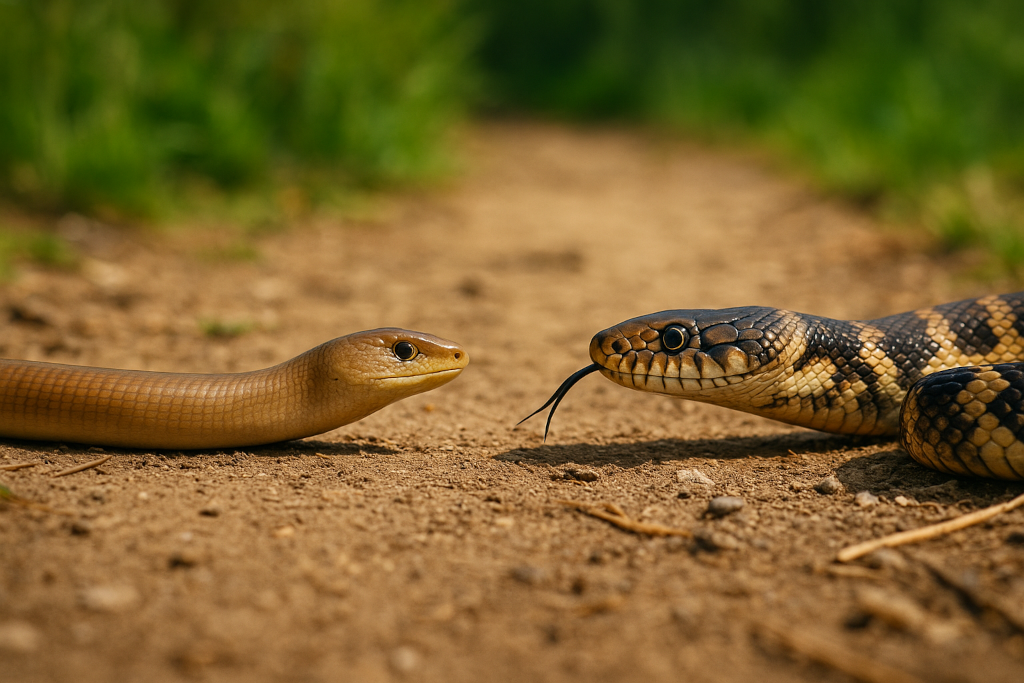You’re out for a hike, and suddenly, something slithers across the path. It’s long, low to the ground, and has no legs. You jump a little (understandable), but then someone nearby says, “Don’t worry—it’s just a legless lizard.” Wait… a what? Isn’t that just a fancy name for a snake?
It’s a common confusion—and a completely understandable one. At a glance, snakes and legless lizards can look almost identical. But here’s the thing: they’re not. In fact, they’re as different as owls and ostriches.
The mistake I used to make, too…
I’ll admit it. As a kid obsessed with reptiles, I proudly told my teacher that snakes were just lizards that lost their legs. Turns out, I was only half right. The truth? Evolution is way more complex—and so much cooler.
Snakes and legless lizards both evolved to slither, but they got there via different evolutionary paths. That shared body plan is no coincidence—it’s a product of something scientists call convergent evolution.
What changed everything for me: the tale of the tail
The real breakthrough for me came in college biology. We dissected a legless lizard and a snake, and the anatomical differences were shocking. Even though both looked like bendy tubes, what was inside (and what was missing) told a totally different story.
Here’s what actually sets snakes apart:
1. A different family tree
- Snakes belong to their own distinct clade: Serpentes. Their ancestors lost not just limbs, but eyelids and external ears too, as they adapted for life underground or underwater.
- Legless lizards, on the other hand, evolved limblessness multiple times in completely separate lizard lineages. They’re still lizards in almost every other way.
2. Eyes, ears, and all the weird stuff in between
- Snakes have no eyelids—just a protective scale like a contact lens called a spectacle. Contrast that with legless lizards, whose eyes blink just like any gecko’s.
- Snakes are earless. They don’t have ear openings, just inner ears to detect vibrations. But legless lizards? You’ll see tiny holes on the side of their heads.
- Snakes’ tongues are long and forked, used to “taste” the air. Legless lizard tongues are short and fleshy—very un-snake-like.
3. The (literally) jaw-dropping difference
One of the most fascinating experiments on record? A famous study from 2024 compared skull flexibility in snakes and legless lizards. Snakes feature ultra-flexible jaws that can dislocate and open wide enough to swallow prey much larger than their head. Legless lizards? Not even close. Their jaws are rigid, built more for insects than small mammals.
4. The tail tells the truth
It turns out, tails are the best clue of all. Legless lizards have very long tails, often longer than their body. Some can even break off part of the tail as a distraction—a trick called autotomy. Snakes, on the other hand, have relatively short tails and can’t shed them. Weird but helpful if you’re paying close attention to the trail.
But wait… the deception runs deeper!
You might wonder: why would so many different lizards ditch their legs? Simple. Nature’s a master of efficiency.
In environments like burrows, dense grasslands, and leaf litter, legs just get in the way. Over time, evolution favored long, tube-like bodies that can glide and twist with ease—whether you’re a python or a slow worm (yes, that’s a real legless lizard’s name!).
In fact, according to a 2013 study in BMC Evolutionary Biology, limblessness evolved in lizards independently over two dozen times. But only true snakes take it to a full-bodied and jaw-unhinging extreme.
The bottom line: they’re not the same… and that’s awesome
Snakes and legless lizards are the ultimate example of nature’s creativity. They may look similar on the outside, but their journeys, anatomy, and adaptations are as different as night and day.
So next time someone calls a snake a “legless lizard,” surprise them with the truth—and maybe even point out the ears, the eyelids, or the wiggly tail.
The real takeaway? In nature, looks can be deceiving—but if you pay close attention, there’s always a bigger story tucked just below the surface.




Leave a Comment